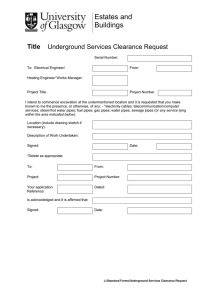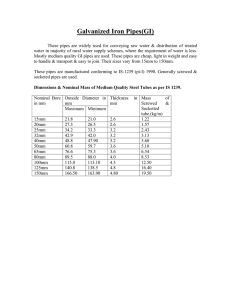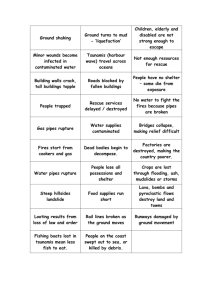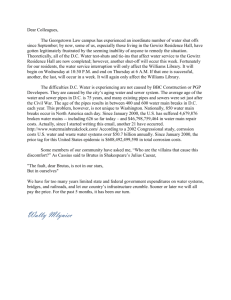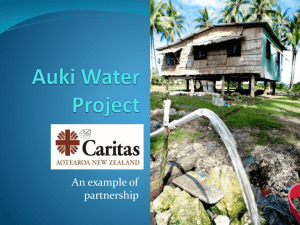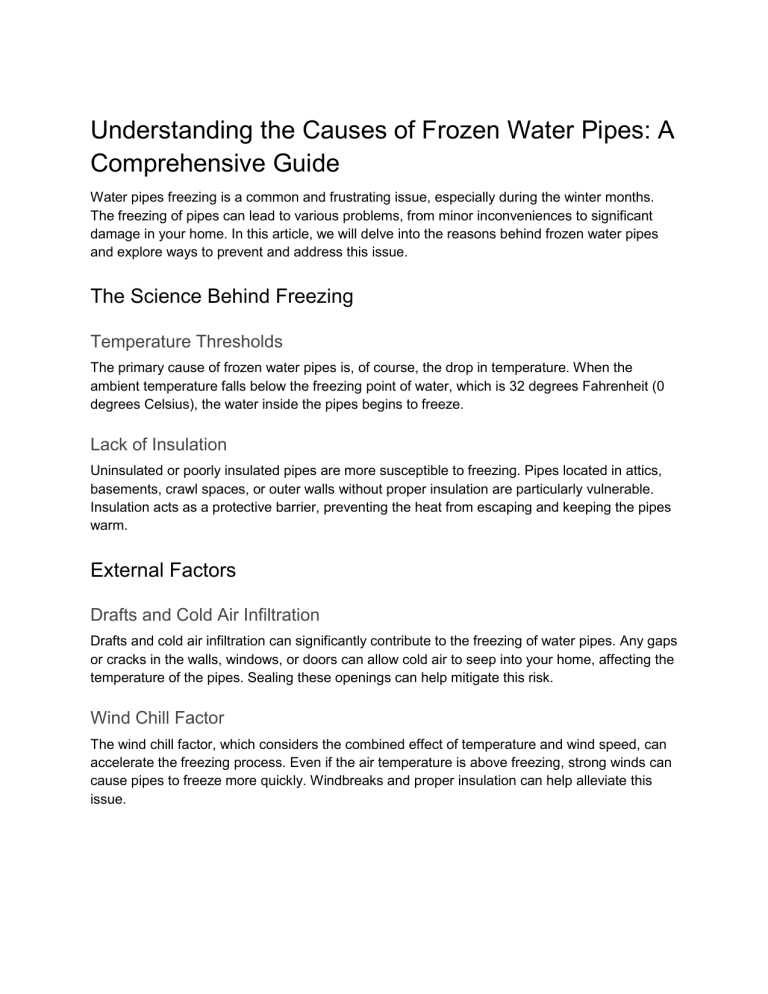
Understanding the Causes of Frozen Water Pipes: A Comprehensive Guide Water pipes freezing is a common and frustrating issue, especially during the winter months. The freezing of pipes can lead to various problems, from minor inconveniences to significant damage in your home. In this article, we will delve into the reasons behind frozen water pipes and explore ways to prevent and address this issue. The Science Behind Freezing Temperature Thresholds The primary cause of frozen water pipes is, of course, the drop in temperature. When the ambient temperature falls below the freezing point of water, which is 32 degrees Fahrenheit (0 degrees Celsius), the water inside the pipes begins to freeze. Lack of Insulation Uninsulated or poorly insulated pipes are more susceptible to freezing. Pipes located in attics, basements, crawl spaces, or outer walls without proper insulation are particularly vulnerable. Insulation acts as a protective barrier, preventing the heat from escaping and keeping the pipes warm. External Factors Drafts and Cold Air Infiltration Drafts and cold air infiltration can significantly contribute to the freezing of water pipes. Any gaps or cracks in the walls, windows, or doors can allow cold air to seep into your home, affecting the temperature of the pipes. Sealing these openings can help mitigate this risk. Wind Chill Factor The wind chill factor, which considers the combined effect of temperature and wind speed, can accelerate the freezing process. Even if the air temperature is above freezing, strong winds can cause pipes to freeze more quickly. Windbreaks and proper insulation can help alleviate this issue. Internal Factors Inadequate Heating Insufficient heating in certain areas of your home can lead to frozen pipes. It is essential to ensure that all areas, especially those containing water pipes, are adequately heated. Pay special attention to rooms with exposed pipes or those located in colder regions of your home. Improper Thermostat Settings Setting your thermostat too low, especially during prolonged periods of cold weather or when you are away from home, can contribute to frozen pipes. Maintaining a consistent and reasonable temperature, even when you are not at home, is crucial for preventing pipes from freezing. Prevention Strategies Insulation Proper insulation is one of the most effective preventive measures against frozen water pipes. Insulate both hot and cold water pipes using materials like foam sleeves or fiberglass wraps. Additionally, insulate areas around pipes located in attics, basements, and crawl spaces. Heat Tape Electric heat tape is another useful tool for preventing pipe freezing. Wrap the tape around vulnerable pipes, and it will generate enough heat to keep the pipes warm. However, it's important to follow the manufacturer's instructions carefully to avoid any safety hazards. Maintain Adequate Heating Ensure that all areas of your home are adequately heated, especially those containing water pipes. Avoid setting your thermostat too low, and consider using programmable thermostats to regulate temperature levels efficiently. Let Faucets Drip Allowing faucets to drip slightly can help prevent pipes from freezing. Moving water is less likely to freeze, so opening the faucet even just a trickle can be an effective strategy during extremely cold weather. Dealing with Frozen Pipes Thawing Pipes Safely If you discover frozen pipes, it's crucial to thaw them safely to prevent damage. Use a hairdryer, heat lamp, or electric heating pad to apply gentle heat to the frozen section. Never use an open flame or excessive heat, as it can damage the pipes. Seeking Professional Help If you are unsure about how to thaw the pipes or if the situation seems severe, it's advisable to seek plumbers assistance. A licensed plumber can assess the extent of the issue and provide the necessary expertise to address the problem without causing further damage. Conclusion In conclusion, understanding the reasons behind frozen water pipes is key to preventing this common winter woe. By addressing both external and internal factors, implementing preventive measures, and knowing how to thaw pipes safely, you can protect your home from the inconvenience and potential damage caused by frozen pipes.
